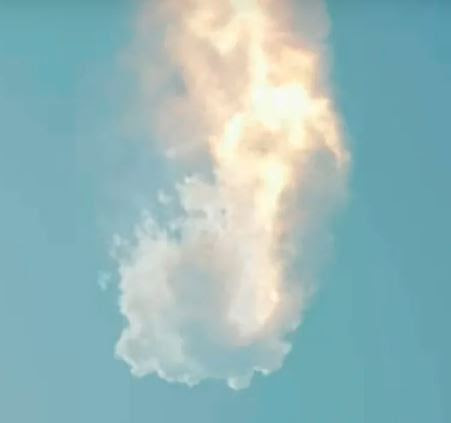On Wednesday, April 20th, 2023, SpaceX successfully launched its Starship spacecraft on its inaugural test flight. The launch, which took place at SpaceX's launch facility at Boca Chica, Texas, was a significant milestone for the company, representing the first step in its plans to send humans to Mars.
The Starship spacecraft is a fully reusable launch system designed to carry both crew and cargo to Earth orbit, the Moon, Mars, and beyond. It consists of two parts: a Super Heavy rocket booster and a Starship spacecraft. The Super Heavy rocket booster is the largest and most powerful rocket ever built, with 31 Raptor engines that produce more than 17 million pounds of thrust at liftoff. The Starship spacecraft, on the other hand, is designed to be both a crew and cargo carrier, with a capacity of up to 100 people.
The launch appeared to go smoothly at first, with the Starship spacecraft successfully ascending to an altitude of approximately 10 kilometers. However, shortly after the spacecraft's engines shut off and it began its descent, it exploded midair and crashed back down to the ground.
While the explosion was certainly a setback for SpaceX, it is important to note that the company is no stranger to setbacks and failures. In fact, many of SpaceX's most notable achievements have come after failed attempts, as the company has a culture of embracing failure as a necessary step in the learning process.
In a statement following the launch, SpaceX CEO Elon Musk emphasized that the company had learned a great deal from the test flight, and that the explosion was an expected part of the development process. He also expressed confidence that the company would be able to quickly identify and address the issues that led to the explosion, and that the Starship spacecraft would be back in flight soon.
In conclusion, while the explosion of the Starship spacecraft during its inaugural test flight is certainly disappointing, it should not be seen as a failure or a reason to doubt SpaceX's ability to achieve its goals. Rather, it is a reminder of the risks and challenges inherent in space exploration, and a testament to the resilience and determination of the SpaceX team. As the company continues to push the boundaries of what is possible, it is likely that there will be more setbacks and failures along the way, but ultimately these will only serve to make SpaceX stronger and more capable of achieving its ambitious vision for humanity's future in space.
In the wake of the failure, SpaceX will undoubtedly conduct a thorough investigation to determine the root cause of the explosion and make any necessary changes to the design or manufacturing process. This process may take weeks or months, but it is a critical step in ensuring the safety and success of future Starship launches.
Despite the setback, SpaceX's plans for human exploration of Mars remain on track. The company has already begun work on the next iteration of the Starship spacecraft, which is expected to have a more powerful propulsion system and greater capacity for both crew and cargo.
SpaceX's success in revolutionizing the space industry over the past decade has been driven in large part by its willingness to take risks and pursue ambitious goals. While setbacks and failures are an inevitable part of this process, they also represent opportunities for learning and growth.
In conclusion, the failure of the Starship test flight is a reminder of the challenges and risks inherent in space exploration, and the importance of rigorous testing and development. However, it should not be seen as a reason to doubt the future of SpaceX or humanity's ability to explore the cosmos. With its pioneering spirit and commitment to innovation, SpaceX is likely to continue pushing the boundaries of what is possible in space exploration for many years to come.




Your comments are greatly valued, and we appreciate your participation.